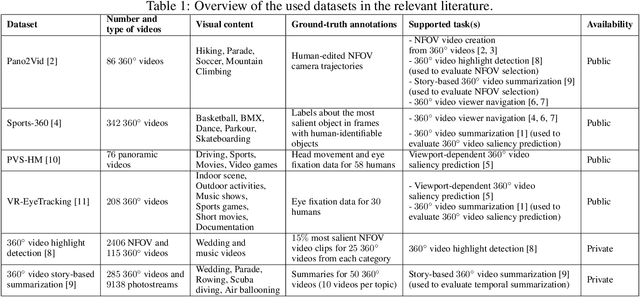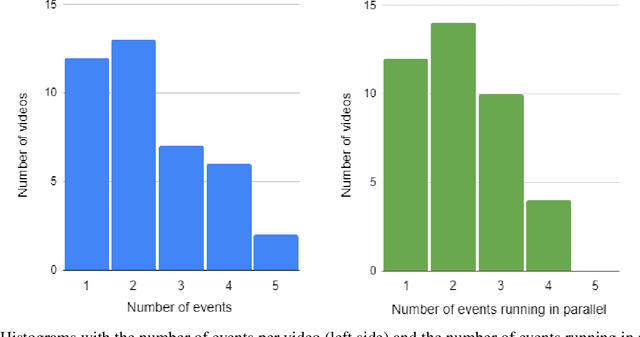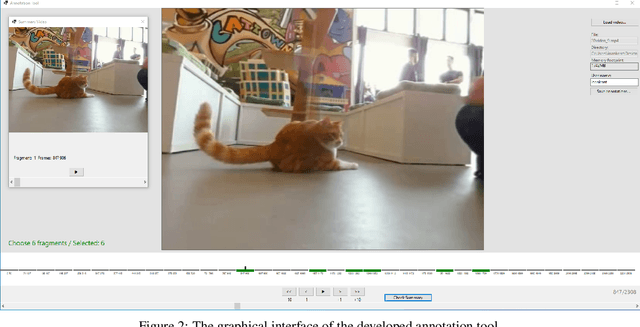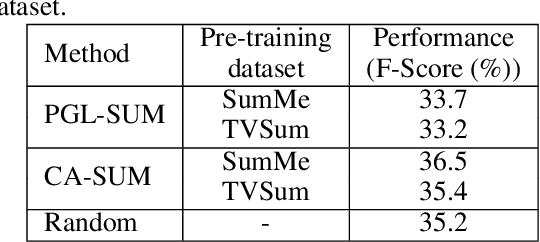Ioannis Kontostathis
A Human-Annotated Video Dataset for Training and Evaluation of 360-Degree Video Summarization Methods
Jun 05, 2024



Abstract:In this paper we introduce a new dataset for 360-degree video summarization: the transformation of 360-degree video content to concise 2D-video summaries that can be consumed via traditional devices, such as TV sets and smartphones. The dataset includes ground-truth human-generated summaries, that can be used for training and objectively evaluating 360-degree video summarization methods. Using this dataset, we train and assess two state-of-the-art summarization methods that were originally proposed for 2D-video summarization, to serve as a baseline for future comparisons with summarization methods that are specifically tailored to 360-degree video. Finally, we present an interactive tool that was developed to facilitate the data annotation process and can assist other annotation activities that rely on video fragment selection.
An Integrated System for Spatio-Temporal Summarization of 360-degrees Videos
Dec 05, 2023



Abstract:In this work, we present an integrated system for spatiotemporal summarization of 360-degrees videos. The video summary production mainly involves the detection of salient events and their synopsis into a concise summary. The analysis relies on state-of-the-art methods for saliency detection in 360-degrees video (ATSal and SST-Sal) and video summarization (CA-SUM). It also contains a mechanism that classifies a 360-degrees video based on the use of static or moving camera during recording and decides which saliency detection method will be used, as well as a 2D video production component that is responsible to create a conventional 2D video containing the salient events in the 360-degrees video. Quantitative evaluations using two datasets for 360-degrees video saliency detection (VR-EyeTracking, Sports-360) show the accuracy and positive impact of the developed decision mechanism, and justify our choice to use two different methods for detecting the salient events. A qualitative analysis using content from these datasets, gives further insights about the functionality of the decision mechanism, shows the pros and cons of each used saliency detection method and demonstrates the advanced performance of the trained summarization method against a more conventional approach.
 Add to Chrome
Add to Chrome Add to Firefox
Add to Firefox Add to Edge
Add to Edge